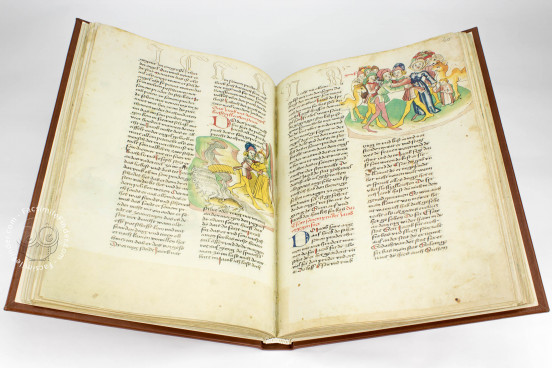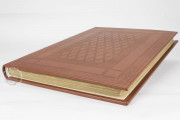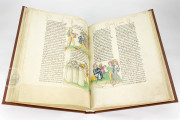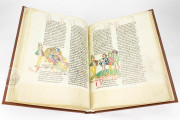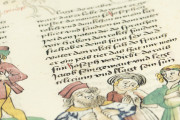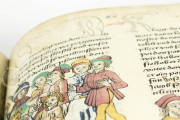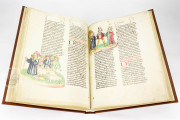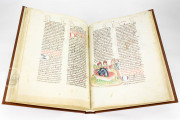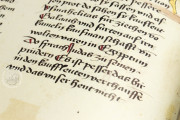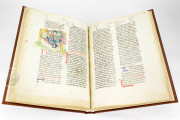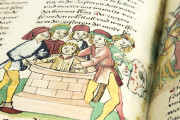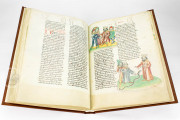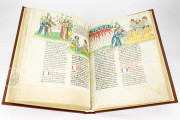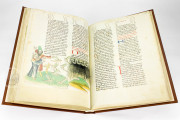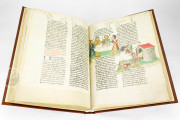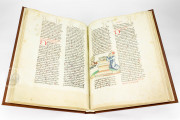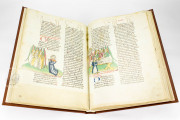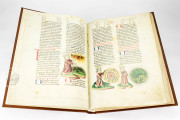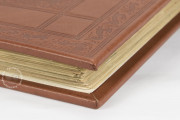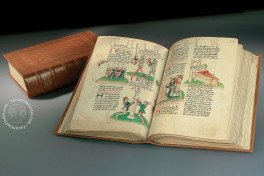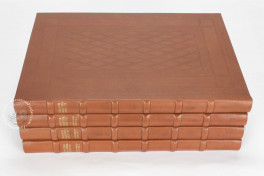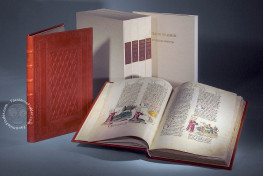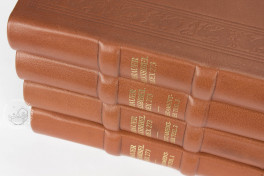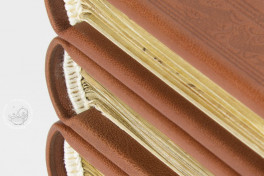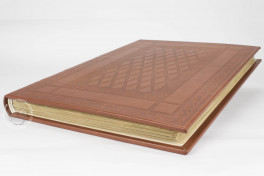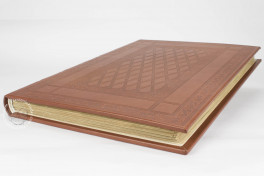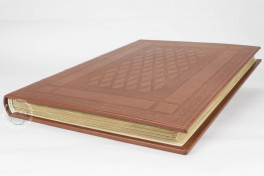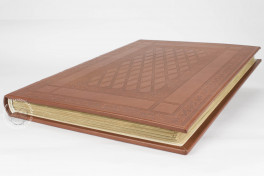The dawn of the medieval period was characterized by great spiritual, social, and economic upheaval. The manuscripts of the time, and especially picture-Bibles, reflect these changes. In them, Biblical narratives are flanked by secular and philosophical digressions. What resulted was a type of universal-history that extended from the Creation to the most recent times. Often penned in the vernacular, history-Bibles provided their readers with religious-educational edification broadened knowledge by making a history-book accessible to the people.
The Vorau Picture Bible: 559 Astonishing Illuminations
Among the roughly 100 history-Bibles in German, the Vorau Picture Bible is unparalleled in its artistic mastery. 559 illuminations in total supplement the Bavarian-Austrian dialect text. The edition includes four volumes. The artists used brilliant watercolors and the figures display some kind of unrest, showing the artist's attempt to individualize his characters, something strikingly absent from the time's "High Art."
The original use of the illuminations was that of interpreting the texts and to illustrate the codex. However, for the present day reader, they document medieval life in an extremely diversified manner, something that makes the Vorau Picture Bible a virtually inexhaustible source for understanding the times in which it was composed.
Text and History of the Manuscript
The text of the Vorau Picture Bible, written in red with red and blue initials, was artfully penned in the scriptorium of the Austrian Rulers. Fortunately, we possess an indication of the exact time of the book's composition. Folio 447v contains a precious detail written by the scribe himself: "Also hat ein endt dy wibel dy alt ee vnd ein tail der newen ee vnd ist geendt waren in vigilia omnium sanctorum anno domini M °CCCC °67". Therefore, the day in which the codex was completed was October 31, 1467.
Although the scribe did not leave us his name, he was likely somebody well versed in religious matters, possibly a cleric born in the South of Germany. Scholars are still unsure about the manuscript's origins and how it came to be preserved at Vorau library. It is first mentioned there in 1733 and has been one of the collection's most treasured items ever since.
We have 6 facsimiles of the manuscript "Vorau Picture Bible":
- Die Vorauer Volksbibel (Special Edition in 1 Volume) facsimile edition published by Akademische Druck- u. Verlagsanstalt (ADEVA), 1986
- Die Vorauer Volksbibel (Full set of 4 volumes) facsimile edition published by Akademische Druck- u. Verlagsanstalt (ADEVA), 1989
- Die Vorauer Volksbibel (Volume 1) facsimile edition published by Akademische Druck- u. Verlagsanstalt (ADEVA), 1989
- Die Vorauer Volksbibel (Volume 2) facsimile edition published by Akademische Druck- u. Verlagsanstalt (ADEVA), 1990
- Die Vorauer Volksbibel (Volume 3) facsimile edition published by Akademische Druck- u. Verlagsanstalt (ADEVA), 1991
- Die Vorauer Volksbibel (Volume 4) facsimile edition published by Akademische Druck- u. Verlagsanstalt (ADEVA), 1993

